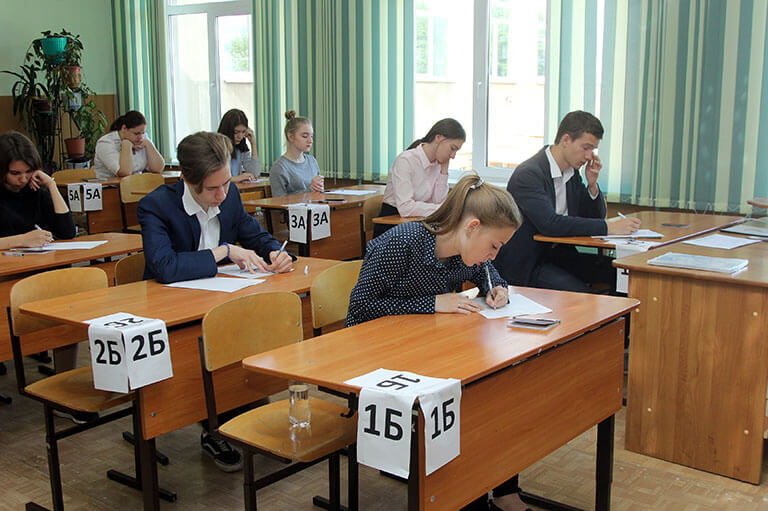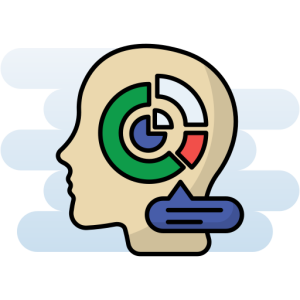The Wide Range Achievement Test 2023

The Wide Range Achievement Test (WRAT) is a widely used cognitive ability test. It measures basic academic skills including reading, spelling and arithmetic.
This brief achievement test provides age- and grade-equivalent scores, standard scores and percentiles. It can be administered in approximately 15 to 25 minutes for children ages five to seven, and 35 to 45 minutes for individuals ages eight and above.
Free Wide Range Achievement Practice Test Online
Wide Range Achievement Test 3 PDF
The Wide Range Achievement Test (WRAT) is a brief individually administered achievement test that measures the fundamental academic skills of word reading, spelling, and arithmetic. Its subtests measure an individual’s ability to read and pronounce letters, copy marks resembling letters and words, write one’s name, and write single words from dictation. It also assesses an individual’s ability to count, read number symbols and solve oral and written arithmetic problems. The WRAT was standardized on a national sample of individuals ranging in age from 5 to 94 years. It is available in two equivalent alternate forms and may be used with children or adults of any sex or ethnic background.
The WRAT measures codes necessary for learning and is a vital component of psychological evaluations conducted in clinical and school settings. It is designed to be easy to administer and interpret. It is normed by age and not grade level, so scores provide rough clues to instructional levels rather than specific determinations of instruction needs. It can be administered by a trained examiner in less than 30 minutes.
Wide Range Achievement Test 4 PDF
The Wide Range Achievement Test – Fourth Edition (WRAT4) is a norm-referenced measure of basic academic skills, including word reading, sentence comprehension, spelling, and math computation. It is designed to be used with individuals aged 5 to 94. It is administered in either the blue or green form, and both forms can be used interchangeably.
The WRAT-4 is widely used in a variety of clinical settings, including neurocognitive assessment and rehabilitation. For example, a recent study administered the WRAT-4 reading subtest along with comprehensive neurocognitive assessments to 150 HIV seropositive and 76 HIV seronegative age-, education-, and sex-matched individuals. The results showed that although HIV-infected participants evidenced worse current neurocognitive functioning, their WRAT-4 reading performance was comparable to the controls.
The WRAT-4 provides a significant amount of information about an individual in a brief amount of time. Moreover, it is simple to administer and score. Hence, it is an ideal screening tool for learning disabilities and a useful instrument in assessing scholastic aptitude. It also serves as a good supplement to other cognitive measures, such as the Wechsler-Bellevue Scales.

Wide Range Achievement Test 4 Scoring
The WRAT-4 measures the basic academic skills needed for effective learning, communication, and thinking. It consists of four subtests: word reading, sentence comprehension, spelling, and math computation. It is normed on a sample of individuals ages 5 to 94 years.
The new version of the WRAT includes an additional subtest for reading comprehension. It also provides a number of different scoring options, including composite scores and separate subtest scores for each of the four skill areas. Its two alternate forms, Blue and Green, can be administered interchangeably or used as a pretest and posttest.
The test’s administration time is brief, about 30 minutes for ages 5-7 and 45 minutes for adults. Its ease of administration and scoring, along with its provision of a significant amount of information in a short investment of time, has made it popular with users. It is widely used in the evaluation of learning disabilities, to monitor a student’s progress throughout their educational career, and as an indicator of a person’s level of intellectual functioning. The WRAT-4 is also useful for predicting an adult’s academic future and evaluating discrepancies between ability and achievement.
Wide Range Achievement Test 4th Edition
The WRAT 4 is a brief test that can provide valuable information about a person’s academic skills. It is often used in schools and by students to check their progress. It also helps teachers determine which skills they need to teach their students. It is designed for people aged five and up. The test takes about 15-25 minutes to administer for children ages five and seven and 35-45 minutes for individuals ages eight and up.

The latest version of the WRAT was published in 2006 by Wilkinson and Robertson and is available from Psychological Assessment Resources Inc. The test measures basic academic skills in the areas of word reading, sentence comprehension, spelling, and math computation. It was standardized on a stratified sample of more than 3000 individuals from 5 to 94 years of age. It includes an overall reading composite score as well as separate scores for word reading, sentence comprehension, and math computation. It has alternate forms (Blue and Green) that can be administered simultaneously with comparable results, allowing for retesting within short periods of time.
Wide Range Achievement Test Fifth Edition
The fifth edition of the Wide Range Achievement Test (WRAT-5) is a nationally norm-referenced assessment of basic academic skills of word reading, sentence comprehension and spelling for people ages 5 to 85+. It is a quick, easy-to-administer measure that provides accurate results in 15-25 minutes for children ages five to seven and 35 to 45 minutes for individuals aged eight and over. It includes a Combined Form that merges the Blue and Green forms into a single test administration.
It is one of the most commonly used measures for screening academic achievement and has strong correlations with full scale IQ in a variety of populations including healthy individuals, those with developmental disorders, and military recruits. It is also frequently used in conjunction with other neuropsychological battery measures for cognitive evaluations such as the Wechsler-Bellevue Scales.
It was developed in 1941 by Sidney Bijou and Joseph Jastak, and it has been revised several times over the years, resulting in the WRAT-4 which was published in 2006. The fourth edition added an overall composite score for reading, as well as subtests for sentence comprehension and math computation. It is standardized on a large, demographically representative national sample to ensure that the results are valid for any individual.

Wide Range Achievement Test Revised
The Wide Range Achievement Test is a norm-referenced measure of reading, spelling, and math computation that can be administered to individuals age 5 to 94. Developed in the 1930s, the test has been revised several times over the years. The most recent version, the WRAT 4, includes four subtests: word reading, sentence comprehension, spelling, and math computation. It can be administered in 15-25 minutes for ages 5- 7 and 35-45 minutes for individuals 8 and older.
The test is quick to administer and interpret, making it an excellent choice for assessing basic skills. It is also a good choice for screening students to determine whether or not they need a more comprehensive achievement test. It is designed to be used with individuals who have been referred by a school or another professional.
The WRAT is available in two forms, Blue and Green, as well as a combined form. The Combined form allows the examiner to administer both forms simultaneously without the need for separate administrations or practice effects. It is possible to derive scores in a variety of formats, including standard scores, percentile ranks, stanines, normal curve equivalents, and grade equivalents.
Wide Range Achievement Test Score Interpretation
The Wide Range Achievement Test (WRAT) is a norm-referenced instrument designed to measure and monitor fundamental reading, spelling and math skills among persons 5 years of age to 85+ years. It has four subtests – Word Reading, Sentence Comprehension, Spelling and Math Computation. During administration, the examiner can choose to administer each of these subtests individually or in combination. The test takes 15 – 25 mins for individuals between the ages of 5 & 7 and 35 – 45 minutes for adults.
The fourth edition of the WRAT, published in 2006, maintains the basic academic content areas of the earlier versions and combines word reading, sentence comprehension, and math computation into one reading composite score. It also retains the features of easy administration and scoring, high reliability, and a considerable amount of information obtained with a short investment of testing time.
The WRAT, developed by Joseph Jastak and Sidney Bijou, measures codes necessary for learning reading decoding, written encoding, and math computation. It is a widely used academic measure and a key component of cognitive ability assessments conducted by psychologists in clinical and school settings.
Wide Range Achievement Test WRAT
The WRAT is an efficient and reliable way to assess and monitor basic reading, spelling and maths skills. It also helps identify possible learning disabilities. It is suitable for individuals ages 5 years and above. The test can be administered in less than 30 minutes and provides standard scores, age-and grade-equivalent scores and percentiles. It also correlates well with the Peabody Individual Achievement Test and other intelligence tests.
The WRAT-4 includes four subtests: Word Reading measures an individual’s ability to decode letters and words using a modified cloze procedure; Sentence Comprehension measures an individual’s ability to gain meaning from written words and ideas through reading comprehension; Spelling measures an individual’s ability to encode sounds into written form by dictating a spelling format; and Math Computation measures an individual’s ability to perform simple oral and written math calculations. The WRAT-4 was standardized on a representative national sample of individuals ranging in age from 5 to 94 years. Alternative forms, known as the Blue Form and the Green Form, were equated during the development of the WRAT-4 and are recommended for use with children ages 8 years and older.
Wide Range Achievement Questions and Answers
The Wide Range Achievement Test (WRAT) is a standardized assessment instrument intended to test the academic skills and achievement of an individual across multiple areas. It is frequently administered in educational, therapeutic, and research contexts to evaluate a person’s reading, spelling, mathematical computation, and sentence comprehension skills. The WRAT is intended to provide a glimpse of a person’s academic abilities, notably in literacy and numeracy. It can be used to identify areas of strength and weakness, to track improvement over time, and to aid in educational or diagnostic decision-making. Typically, the test consists of providing the subject with a series of items or tasks that evaluate their ability to read, spell, perform basic math calculations, and comprehend written language. To establish an individual’s performance level and percentile rank relative to their classmates, test scores are compared to a standard norm group. Different versions of the WRAT for various age groups have been altered and updated over the years. It is frequently used in schools, clinics, and research settings as part of comprehensive evaluations or to monitor academic intervention success.
Standardized tests called Wide Range Achievement Tests (WRAT) are used to gauge a person’s academic abilities in subjects including reading, spelling, math computation, and sentence comprehension. The tests offer a quick glimpse of the person’s competence in various fields. The average method for determining an individual’s performance level and percentile rank is to compare the results to a norm group. The process of interpreting WRAT results entails outlining the test, giving it to the candidate, scoring it, and then assessing the findings to determine the candidate’s academic strengths and weaknesses. Taking into account elements like percentile ranks, achievement levels, and educational consequences, the results can direct educational decisions and actions. It’s crucial to interpret WRAT results in conjunction with other assessment information and with the knowledge of assessment experts.
The purpose of achievement tests is to evaluate the skills and knowledge acquired at a certain grade level, typically through scheduled teaching, such as training or classroom instruction. Typically, aptitude exams are contrasted with achievement examinations.
The WRAT5TM, now in its fifth edition, is a reliable and simple-to-use tool for evaluating and tracking reading, spelling, and math skills. It also aids in the identification of potential learning problems.
The Wide Range Achievement Test 4 (WRAT4) is an assessment of academic abilities that measures reading, math, spelling, and understanding. The WRAT4 is a good initial evaluation, re-evaluation, or progress metric for any student’s academic achievement.